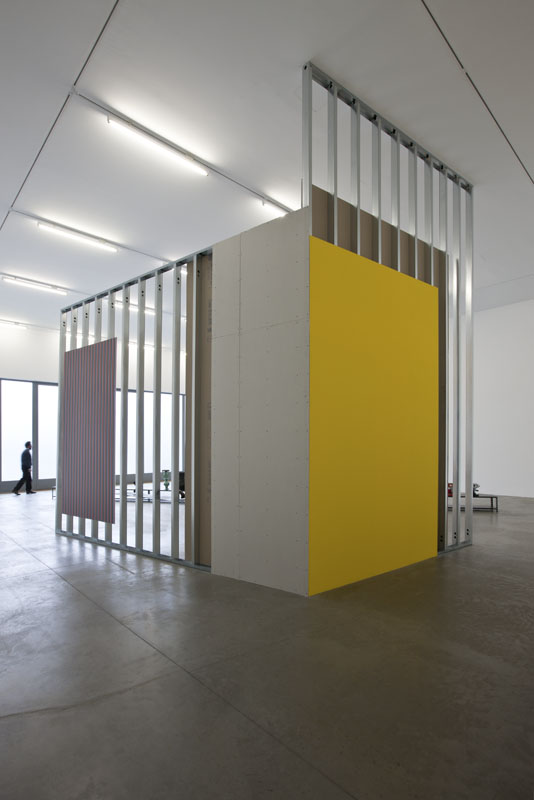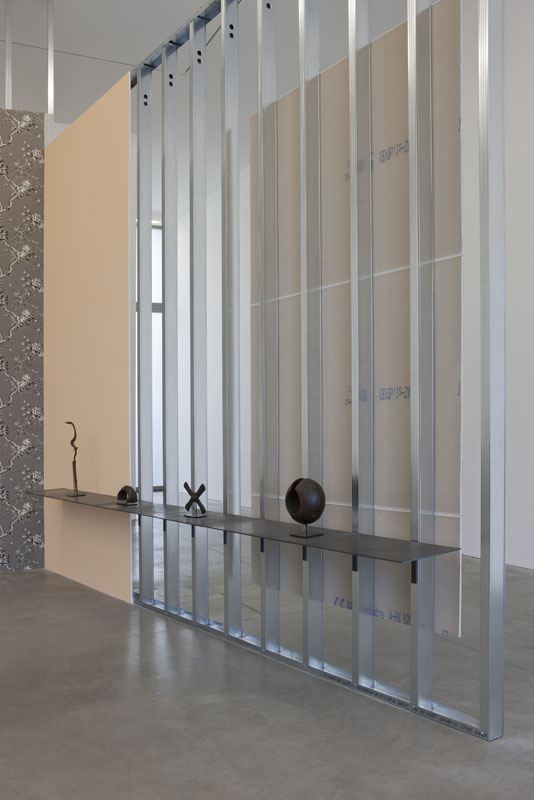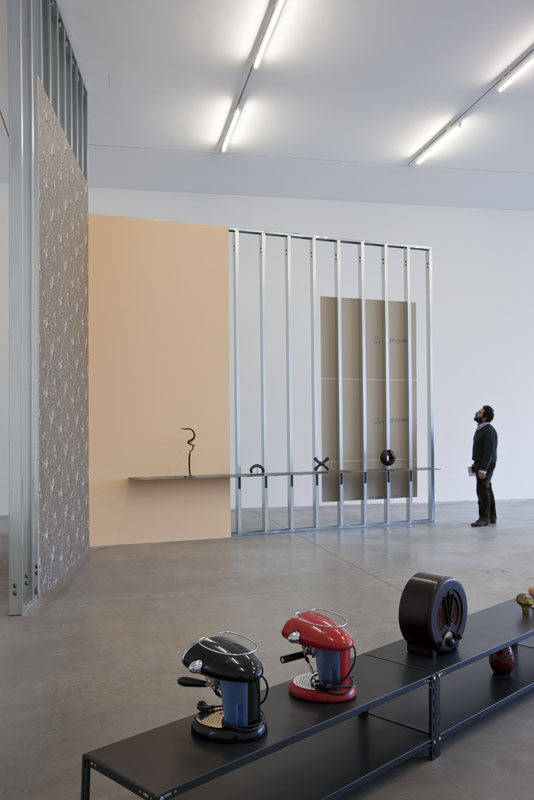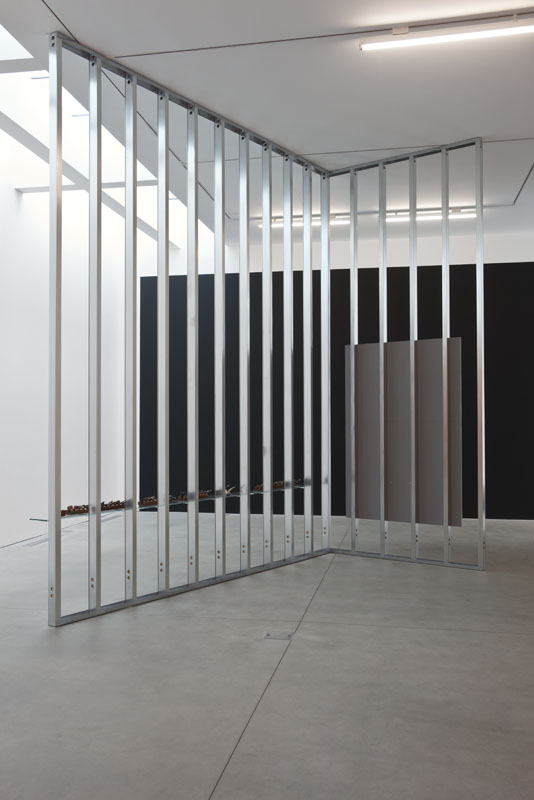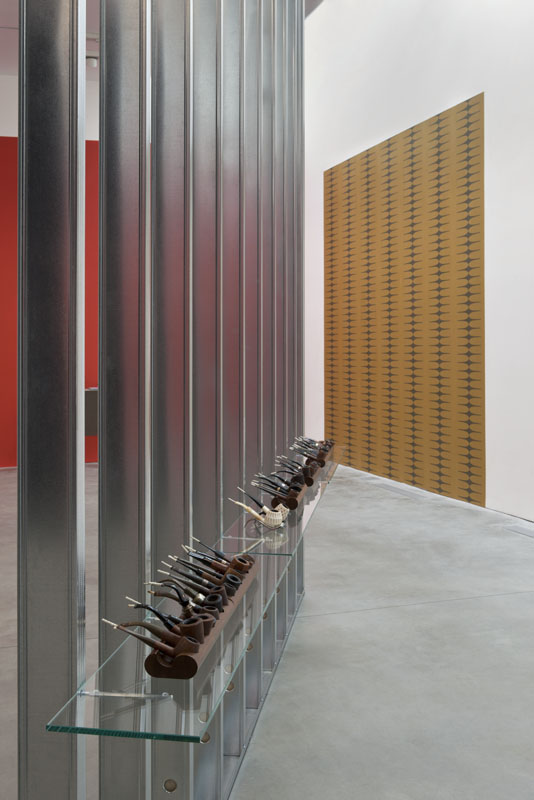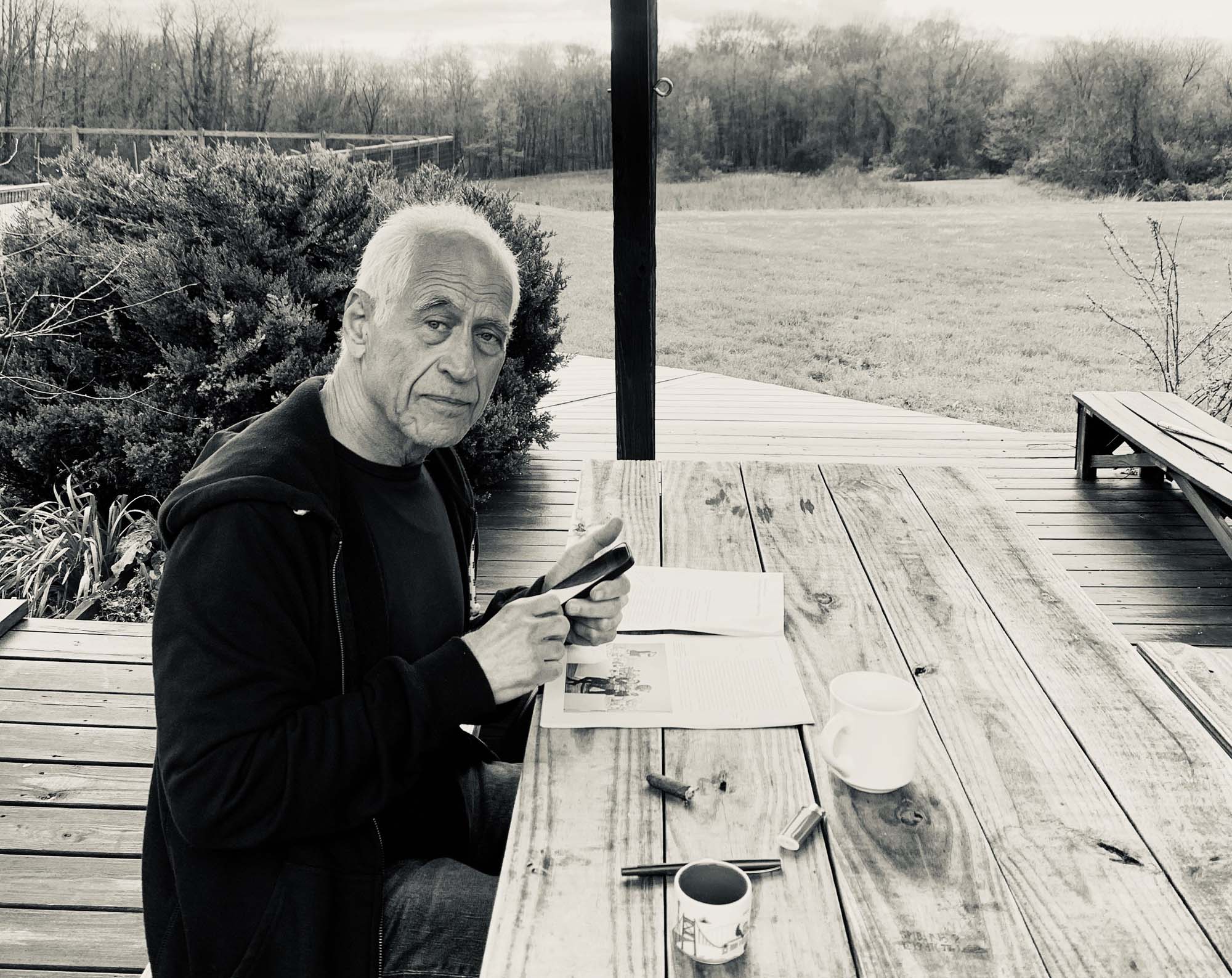In his solo show at the Lia Rumma Gallery Haim Steinbach employs standard architectural building materials - metal studs, drywall, prefabricated shelving units, paint and wallpaper – evoking both domestic and institutional spaces as places ready for presentation.
The artist exhibits over 50 objects selected from seven collections. The objects are arranged and placed on shelves, and are displayed on both the permanent gallery walls and Steinbach’s temporary walls. The concept for the exhibition began with a proposition to the collectors to choose, with mutual agreement, approximately a dozen objects belonging to them. Steinbach subsequently made a selection by reducing the collection to a few objects, at times punctuated by the inclusion of an object from his own collection. Walls, bannisters, fences and furniture articulate categories of spaces and define boundaries for activities and rituals. Inadvertently they also stage real life in a way that underscores its theatricality. The “props” employed by Steinbach re-enact that fine line between every day and its surroundings. The introduction of the collected objects sets in motion the social dynamic of “the relation between ‘the subjective’, search for meaning and ‘objective things’”. On the ground floor, a group of objects from Lia Rumma’s collection mark the long relationship of friendship and collaboration between the dealer and artist. The glass and ceramic vases, plates, bowls, cups, wine decanters and sculptures are lined up on an extended prefabricated shelving unit that bisects the space. These personal belongings are contrasted by an elongated shelf, built into the adjacent wall framing, which supports a series of objects from an extensive collection of African tribal currency. On the opening night, 6 musicians will employ another typology of objects, wind instruments. They will perform a range of sounds and musical sequences.
Over the years Haim Steinbach has put into use a shelf of his own invention that he refers to a as a device. It is a device that divides in that it is made of proportionally equal units of different sizes. These are calibrated in relation to the objects they support, and that is contingent on each other. On the first floor, three such works are distributed on the gallery walls with each one holding a group of objects from a specific collection. A skeletal wall traversing the space includes a shelf with a selection of small unselected ceramic objects from the three collections. A collection of pipes and punches is presented on a bare studded wall built in the middle of the second-floor space. These are displayed in relation to a work hung on the gallery wall and holding a selected group of the African tribal currency. A work, “Untitled (plant, artichoke)” 2013, with objects chosen by Haim Steinbach from his own collection, is also introduced here. In doing so, Steinbach exposes the contingency of objects to their context. While architecture shapes space, in this third room, the shape of things shapes space. While we experience space in volume and in relation to scale, it is the language of shape, pattern and surface that is the grounding reality, the cultural matrix of connectedness.


